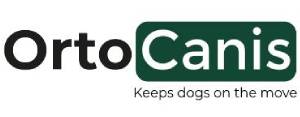A massage routine involves different exercises. A manoeuvre can be defined as the manipulation of the body’s structure using the hands, elbows or other instruments: mechanical vibrators, wooden or plastic equipment or massagers that can also incorporate heat or vibrations.
Each of the different manoeuvres has specific goals and effects (sedation, stimulation, hyperaemia, relaxation, stretching, an increase in muscle tone, fluid drainage...)
Dogs, unlike horses, do not get used to using large vibrating devices. You can use massagers, however you will mainly use your hands. The aim of the massage is usually to relax the animal and therefore the techniques used are soft, slow and sedative.
The main massage techniques are:
Passive contact, superficial and deep effleurage, friction, vibration, percussion and kneading.
These techniques can be varied and different rhythms can be applied depending on the objectives of the treatment.
Contact or Passive (Passive Touch)
This is an introductory technique which aims to both treat and evaluate the case.
Hold your hand in place on the dog’s skin without making any conscious movement. You should take a “listening” stance. Listen to what the body of the dog you are treating is telling you. Listening allows you to observe and feel how the body reacts to contact with you.
It is common to feel rhythmic up and down or spiral movements. This is most likely to be the fascia moving.
In any case, a tense sensation in the tissue, muscle contraction, temperature and sensitivity are aspects that you should assess and remember for later stages of the massage.
Contact alone can sometimes be therapeutic, although this technique includes an important element of exploration or assessment. A simple gesture like an affectionate touch with “therapeutic intention” to a structure can improve the characteristics of the tissue.
Effleurage
Hold your hands flat on the dog’s skin and move them in the direction of the muscle fibres underneath. You should exert very gentle pressure, the subcutaneous structures should not move.
Effleurage is a manoeuvre where the mechanical effect only has an impact on the skin; systemic effects and effects on the underlying muscle tissue are reflexive and via chemical mediators.
You apply effleurage at the beginning of the massage routine and at the end, or when the animal is highly sensitive and you cannot use more aggressive manoeuvres.
The main physiological effects stimulated by effleurage are as follows:
• Local sedation
• A rise in skin temperature
• Surface vasodilation
• A decreas in skin sensitivity
• Relaxation
You can distinguish between superficial effleurage, which is an introductory technique applied using one hand or both hands, either independently or together, and deep effleurage, when you apply more pressure and use both hands (one on top of the other) to achieve more depth and pressure.
When applying superficial effleurage it is important to maintain contact with the dog. Therefore we recommend using both hands alternately so that there is always a hand on the animal’s skin.
Friction
You apply friction by placing a hand on the structure that you wish to treat and moving it to and fro rapidly and intensely. Apply pressure (the degree of pressure varies depending on the structure you are treating) and move your hand in the same direction as the underlying muscle fibre.
Friction has a strong mechanical effect on the skin and the superficial muscle structures and tendon structures. You can deepen the effect by applying a greater level of pressure. The mechanical energy produced by the effleurage itself causes the local temperature to significantly increase.
The pressure exerted varies depending on the structure that you wish to treat: it should be mild when treating the skin and subcutaneous tissue, moderate when treating superficial tendons and muscles, and strong when treating deeper muscles.
Friction can be applied using a flat hand, using the thenar and hypothenar eminences and the fingertips.
Friction has a more significant amount of direct mechanical effects than effleurage, but it also involves a series of systematic reactions and important sensors.
The main physiological effects are:
• Elimination of dead cells.
• Elimination of scar adhesions.
• A reduction in muscular contractions and tension.
• It activates venous and lymphatic circulation.
• It reduces fibrosis
• It dilates the capillaries.
• It stimulates an increase in muscle tone and reduces muscle atrophy.
• It reflexively activates the vasomotor centres.
• It reabsorbs effusion fluid, edema fluid and exudates.
There is a specific technique for treating the tendons: deep friction or the deep transverse massage or Cyriax massage.

